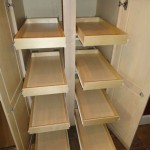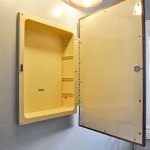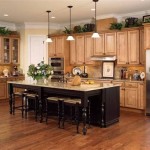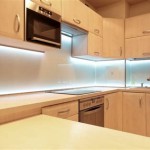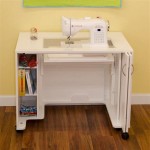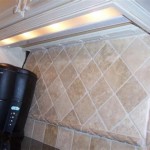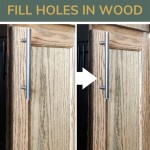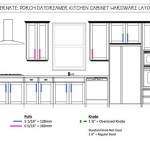What Size Should My Cabinet Pulls Be?
Choosing the right cabinet hardware can significantly impact the overall aesthetic and functionality of a kitchen or bathroom. While often overlooked, the size of cabinet pulls plays a crucial role in both form and function. Selecting pulls that are too small can make them difficult to grip, while oversized pulls can look clunky and disproportionate. This article will explore the factors to consider when determining the appropriate size for cabinet pulls.
Consider Cabinet Size and Style
The dimensions of the cabinets themselves are a primary factor in determining the appropriate pull size. Larger cabinets generally benefit from larger pulls, while smaller cabinets often look best with more petite hardware. A large, ornate pull on a small drawer can appear overwhelming, while a tiny knob on a large cabinet door can get lost visually. Consider the overall scale and proportion of the cabinetry when making a selection.
Cabinet style also influences pull size. For example, shaker-style cabinets, known for their clean lines and simplicity, often pair well with sleek, moderately sized pulls. Conversely, more ornate or traditional cabinet styles may complement larger, more decorative pulls. The goal is to achieve a harmonious balance between the cabinet style and the hardware chosen.
Center-to-Center Measurement: A Critical Factor
Understanding the center-to-center measurement is crucial when selecting cabinet pulls. This measurement refers to the distance between the two screw holes on the back of the pull. Most manufacturers list this measurement in their product specifications. It is essential to measure the existing holes on your cabinets (if replacing hardware) or determine the desired placement for new holes to ensure compatibility with the chosen pulls.
Common center-to-center measurements for cabinet pulls include 3 inches, 3.75 inches, and 5 inches. Three-inch pulls are often suitable for smaller drawers and cabinets, while larger pulls with a 5-inch center-to-center measurement are typically used on larger doors and drawers. 3.75 inches represents a versatile middle ground suitable for a range of cabinet sizes.
Pull Length vs. Projection: Understanding the Difference
While the center-to-center measurement determines the spacing of the screw holes, the overall length of the pull impacts its visual presence and usability. Longer pulls offer a more substantial grip and can contribute to a bolder aesthetic. However, excessively long pulls can be impractical and may interfere with adjacent cabinets or drawers.
Projection, on the other hand, refers to how far the pull extends outward from the cabinet surface. A pull with greater projection can be easier to grasp, particularly for individuals with limited hand strength or dexterity. However, excessive projection can also pose a snag hazard. Finding a balance between comfortable grip and practical clearance is key.
Material and Finish: Complementary Considerations
While not directly related to size, the material and finish of the cabinet pulls should complement the overall design scheme. For instance, brushed nickel pulls can lend a modern touch, while oil-rubbed bronze can enhance a more traditional or rustic aesthetic. The finish should also coordinate with other hardware in the space, such as faucets and light fixtures, to create a cohesive look.
The material of the pull can also impact its perceived size. For example, a darkly finished pull may appear visually smaller than a light-colored pull of the same dimensions. Considering these nuances can help ensure a harmonious blend of form and function.
Testing and Experimentation: Finding the Perfect Fit
Ultimately, the best way to determine the ideal size for your cabinet pulls is through testing and experimentation. Consider purchasing a few different sizes and styles to try on your cabinets. This allows you to visualize how they look and feel in the actual space. Many hardware stores offer sample pulls specifically for this purpose.
Pay attention to how comfortable the pulls are to grip and how they interact with the surrounding elements. This hands-on approach can help you avoid costly mistakes and ensure a satisfying final result.
Mixing and Matching: A Design Opportunity
While consistency is generally recommended, strategically mixing and matching pull sizes can create visual interest and enhance functionality. For instance, larger pulls might be used on drawers while smaller knobs adorn upper cabinets. This approach can create a dynamic and layered look. However, exercise caution to maintain a sense of balance and avoid a chaotic appearance.
Consider using longer pulls on larger drawers or doors and shorter pulls on smaller ones. This approach maintains proportionality while providing a practical and aesthetically pleasing solution.

How To Choose Hardware Pull Size For Your Cabinets
How To Choose The Best Size Pulls For Your Cabinets Trubuild Construction

What Size Knob Or Pull Should I Get The

The Right Length Cabinet Pulls For Doors And Drawers Porch Daydreamer
Cabinet Hardware Sizing Guide The Knobbery Door Bath Accessories Faucets Furniture Knobs And Pulls

Comprehensive Guide To Cabinet Hardware Size Placement Handles More
Cabinet Hardware Sizing Guide The Knobbery Door Bath Accessories Faucets Furniture Knobs And Pulls

The Right Length Cabinet Pulls For Doors And Drawers Porch Daydreamer

Comprehensive Guide To Cabinet Hardware Size Placement Handles More
How To Choose The Best Size Pulls For Your Cabinets Trubuild Construction
Related Posts

